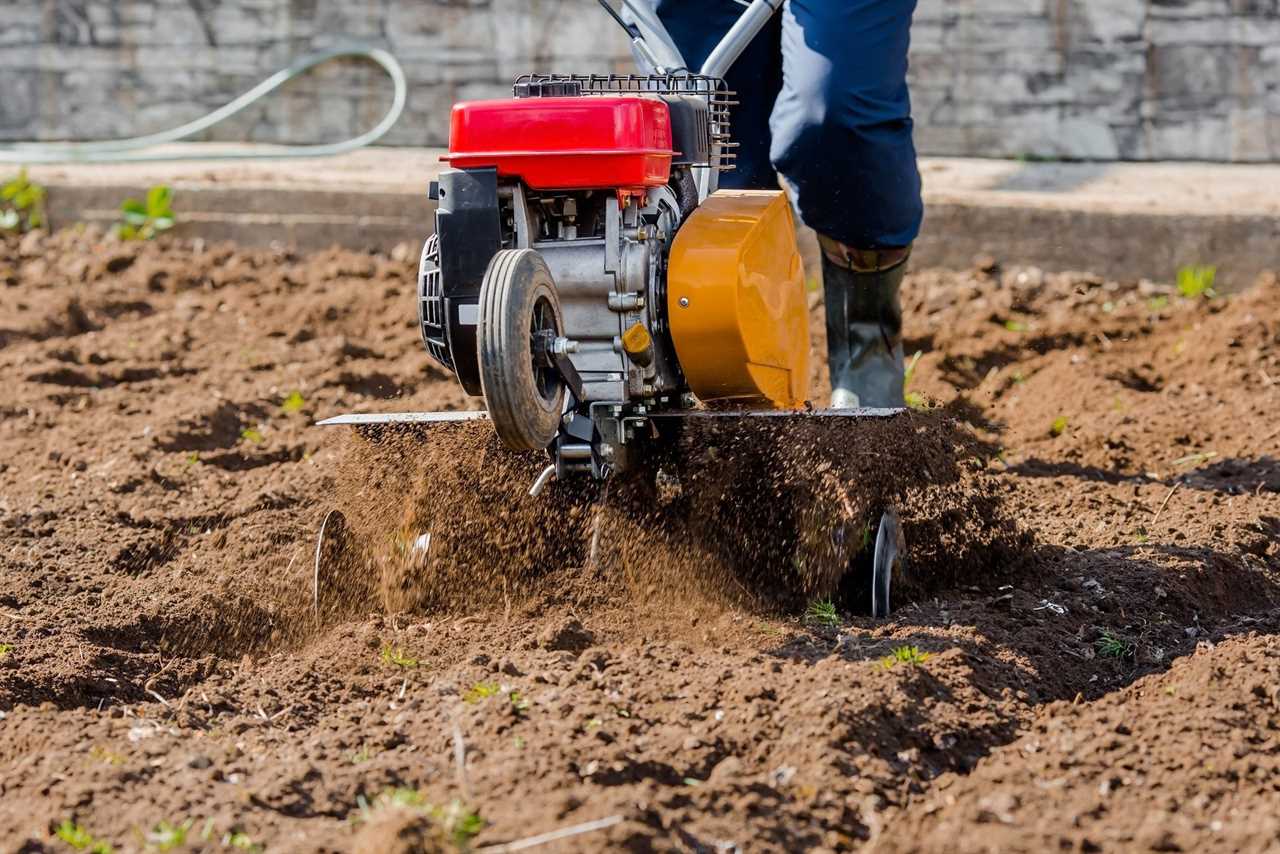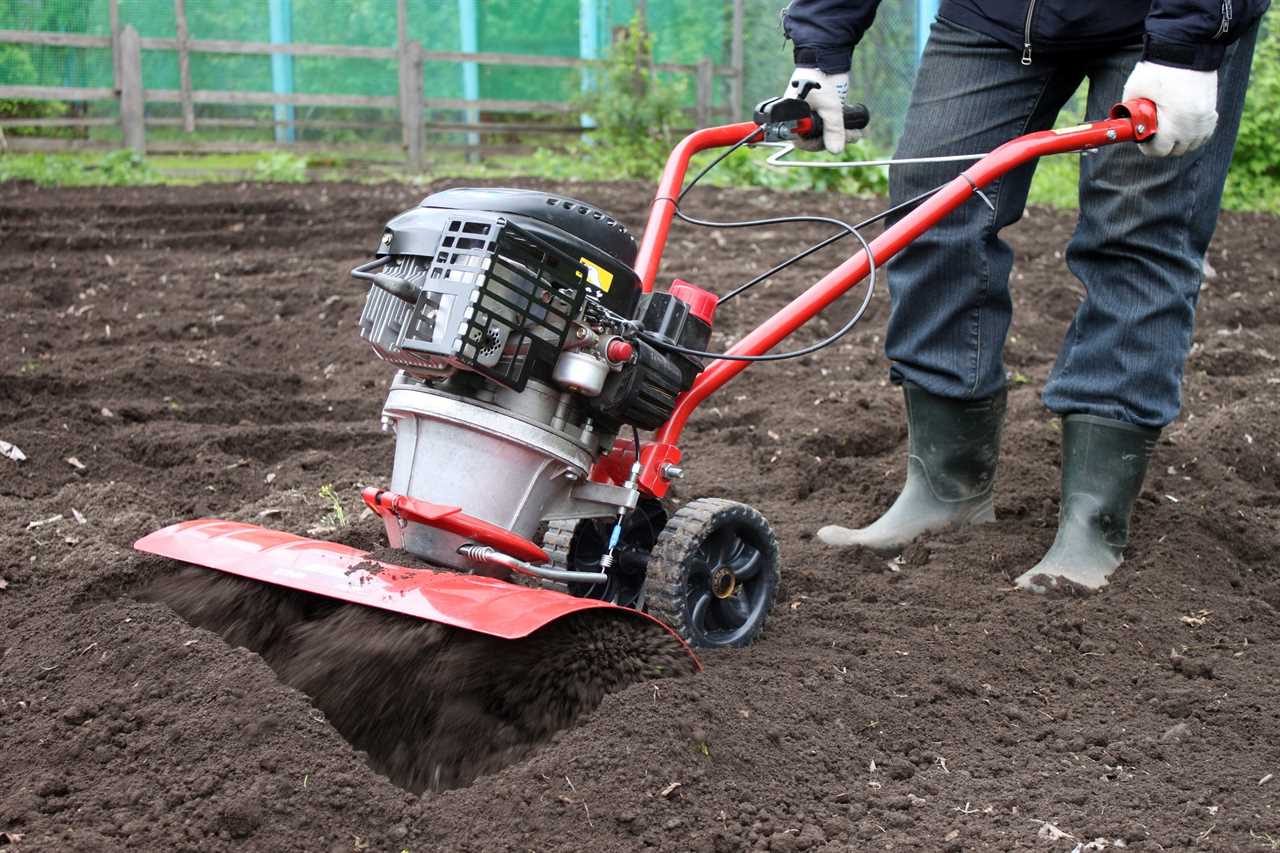Garden cultivators and tillers are often thought of as interchangeable because both have motor-driven rotating metal blades that break up soil. But they’re designed for different situations. To help you choose the right tool for your garden, here’s a rundown of differences between a cultivator and tiller.
What’s a Cultivator?

A cultivator looks like a lawn seed spreader with big blades at the base. It typically features a two-cycle engine that runs on a mixture of gasoline and oil, though some four-cycle, gas-only engines are available. Some models are electric, either cordless or corded, with the latter requiring a long extension cord.
Depending on the model, cultivators cost $200 to $500. They feature operating widths up to 12 inches and digging depths up to six inches. Some may have forward- and reverse-rotating tines and maneuver well around plants. And they’re usually not a hassle to transport and store.
What’s a Tiller?

A tiller is a formidable gasoline-powered machine similar in size to a two-stage snow thrower. It uses regular gas, not a gas/oil mix. It’s made for heavy jobs and big areas of 200 sq. ft. or more.
“If you are creating a new garden in ground that’s never been turned over, a tiller is the way to go,” says Greg Niewold, farmer and owner of Power Planter, Inc., in Loda, Illinois.
Vince Christofora, owner of Woodstock Hardware in Woodstock, New York, sees lots of tiller use in his area. “Here in the Northeast with our rocky soil and clay, a tiller is often called for, especially on virgin ground,” he says. “You need the extra size and weight of a tiller to keep the rotating blades down in the compact soil versus riding on top.
“To keep the tiller down, you have to wrestle and manhandle it sometimes. I tell people who are going to till gardens for a weekend to first stop at a pharmacy and pick up Advil. You may be sore.”
Depending on the model, a tiller costs $500 to $2,800. It has an operating width of up to 36 inches and a digging depth of up to 10 inches. Tillers weigh up to 200 pounds and work best in open spaces. Because of their size, transporting and finding storage space can be problematic.
Front-tine tillers have tines (metal blades) that move the machine forward and, in some models, in reverse while digging into the soil. They are good for weeding between wide rows, soil preparation and composting in small or medium gardens.
Rear-tine tillers are larger than front-tine tillers and come with engine-driven wheels. Rear-tine tillers are suited for larger planting areas. Some models have forward-rotating tines that work old vegetation into existing beds and counter-rotating tines that turn in the opposite direction of the wheels. Counter-rotating tines are more effective in breaking up new ground and can dig deeper into the soil.
Cultivator vs. Tiller: What’s the Difference?
Cultivator
- “A cultivator is for turning over soil that has already been worked,” says Christofora. “Gardeners who have smaller, established planting areas are more likely to buy cultivators;”
- Some cultivators require a gas/oil fuel mix
- Cultivators are easier to maneuver than tillers and better in close, small spaces. Cultivators are ideal for loosening soil, weeding and working fertilizer, manure and compost into soil;
- Cultivators mix potting and regular soil together while breaking up weeds and grasses;
- Niewold says cultivators are “less disruptive to the environment” than tillers that dig deeper and turn over larger amounts of dirt. That can kill beneficial earthworms and introduce weeds and pest problems.
Tiller
- When creating a new garden plot, use a rear-tine tiller with counter-rotating tines. Cultivators won’t work because they lack the weight and power of tillers. Tillers have larger, heavy-duty tines for loosening hard soil;
- Tillers run on gasoline only;
- A tiller offers a greater working width than a cultivator, a good option for big, open plots;
- Tillers work in gardens of various sizes. Cultivators are more limited;
- Front-tine tillers are more compact and maneuverable than rear-tine tillers. They’re an option for turning soil to improve planting conditions in some open, smaller spaces.
Two Alternative Methods
- In establishing new small gardens, consider renting a tiller and buying a cultivator. Renting for a day provides tiller power needed to turn over new soil. Once the small garden is set, you don’t need a big, powerful tiller; a cultivator is fine for ongoing maintenance.
- Instead of digging up the entire garden, dig only where you plant using something like a Power Planter, an auger-cordless drill combination. “You drill a hole big enough for the plant to grow but not disturb the ecology of the entire garden, which may invite weeds and pathogens,” Niewold says.
Did you miss our previous article...
https://rsssuperfeeds.com/life-hacks/the-honeywell-true-hepa-air-purifier-is-familyapproved-by-the-handyman






